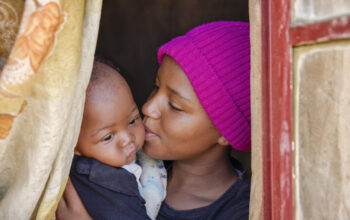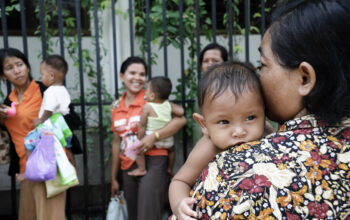Smart Thinking for Healthy Lifestyles
This blog was originally posted in Diplomatic Courier
Since the start of this millennium, we have witnessed many success stories in global health. Death from infectious diseases like malaria and tuberculosis have been cut in half. A child is twice as likely to survive past their fifth birthday than he or she was fifteen year ago. Hunger and malnutrition remain, but affect a smaller percentage of the world’s population than ever before.
Yet there is an area where the trends are not in our favor. Non-communicable diseases (NCDs), including cardiovascular diseases, respiratory diseases, cancer and diabetes, are the world’s leading cause of poor health, and growing in prevalence. In low-and middle-income countries (LMICs), where health systems are often strained, under-equipped and under-staffed, NCDs lead to the premature death of over 13 million people each year.
Faced with such a momentous challenge, governments struggle to address NCDs “on a budget”. This will hamper attempts to put in place effective Universal Health Coverage, a key component of the Health Sustainable Development Goal for 2030 (SDG 3). When we look to the world in 2030 or beyond to 2050, will we be able to say enough was done today to stem the rising tide of NCDs? I am hopeful that the answer will be yes, thanks in part to ongoing multi-sectoral efforts to reach the widest audience possible with information that could save their life.
Health and wellness in the community
Many NCDs require treatment for years on end, even over the course of a lifetime. The health consequences can be crippling for an individual. The economic consequences are twofold: the cost to patients and their healthcare systems, and the loss of productivity in a country where too many people are not well enough to work. A Harvard University study estimates a loss in economic output of USD 7 trillion in developing countries due to NCDs from 2011 to 2025.
But there are solutions: according to the World Health Organization (WHO), the majority of the world’s NCDs could be prevented through behavioral change. As stated by WHO Director General Margaret Chan, “The worldwide increase of non-communicable diseases is a slow-motion disaster, as most of these diseases develop over time. But unhealthy lifestyles that fuel these diseases are spreading with a stunning speed and sweep.”
We like to call them the “4 Healthy Habits”, and they go a long way for a person’s wellness: cutting out tobacco and overconsumption of alcohol, while eating healthy and being physically active.
Equipped with this knowledge, my organization, the International Federation of Pharmaceutical Manufactures and Associations (IFPMA), works with the International Federation of Red Cross and Red Crescent Societies (IFRC) to produce toolkits to help community volunteers assess a person’s risk of developing an NCD, provide guidance on preventative steps they should be taking, and refer at-risk individuals to clinical assessment. Thus far, the tools have been translated into 10 languages including Arabic, Russian, French and Indonesian.
Long-term public health strategies in LMICs call for more doctors and nurses on the ground to care for people with NCDs—today many countries in sub-Saharan Africa have less than one doctor per 10,000 people, compared to 20 or 30 doctors in high-income countries. As governments work to this objective, multi-sectoral partnerships like 4 Healthy Habits reduce the burden upon health systems, sharing messages about NCD prevention at community level in order to reach as wide an audience as possible.
Health and wellness at your fingertips
If you want to get important information out to the many, it is impossible to ignore the value of the cell phone.
There are over 7 billion cellular subscriptions in the world, the large majority in LMICs. Mobile technology is transforming the way that we approach the dissemination of health information. Widely available, affordable, and portable, cell phones can take key health messages and put them directly into people’s hands—at very low cost.
To unlock this potential, IFPMA has teamed up with WHO, the International Telecommunications Union (ITU) and other partners in Be He@lthy Be Mobile. This partnership provides governments with best practices for mhealth interventions, based on existing clinical evidence from trials around the world. For example, the mDiabetes initiative in Senegal, working to reach the country’s estimated 400,000 undiagnosed diabetes patients and provide them with care before the disease progresses to the need for hospitalization.
Health partnerships like 4 Healthy Habits and Be He@lthy Be Mobile promote the good behaviors to stop NCDs in their tracks, providing governments in low-resource settings a leg-up in achieving the Sustainable Development Agenda of the United Nations.
Alongside the pursuit of new, more effective treatments for NCDs and support for capacity building of healthcare and regulatory professionals in LMICs, preventative action is a critical element of my industry’s framework for action on NCDs and the SDGs more generally. We do our best to walk the talk. A survey from across our industry demonstrated nearly 100% of IFPMA member companies had well-established workplace wellness programs in place, to the benefit of over 1.1 million employees. After all, today or in 2050, and no matter how impressive modern medicine, it is better that someone remains healthy in the first place.
Author





